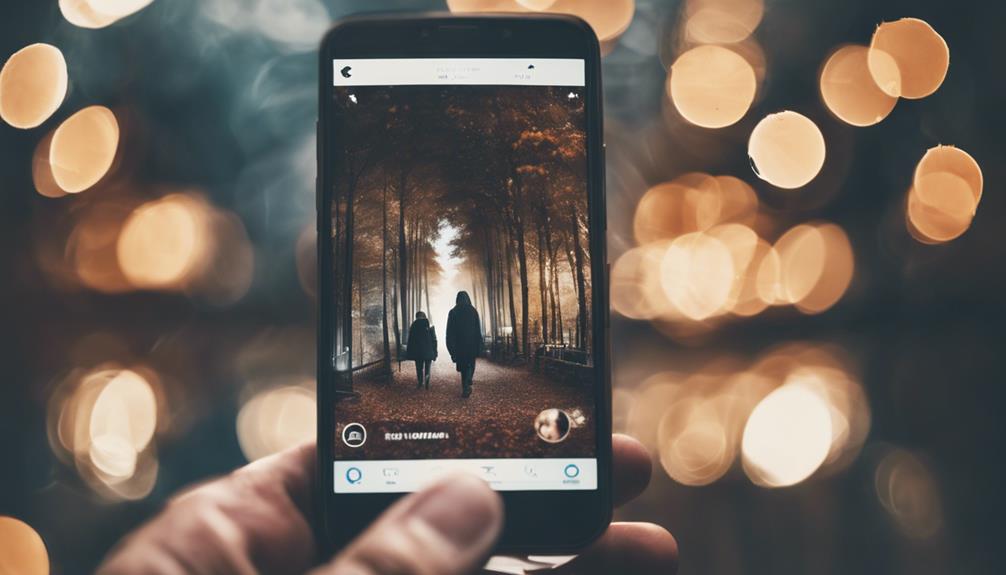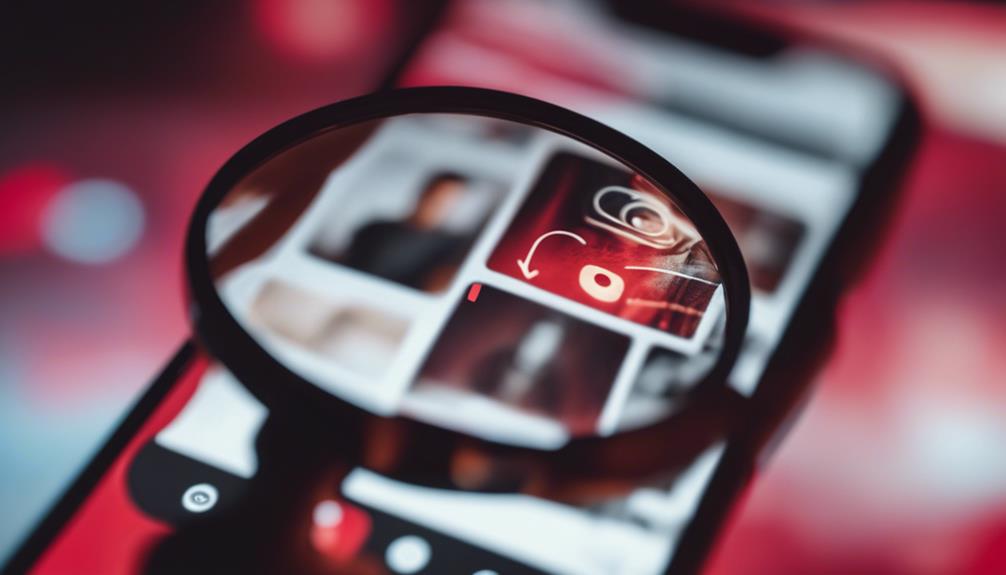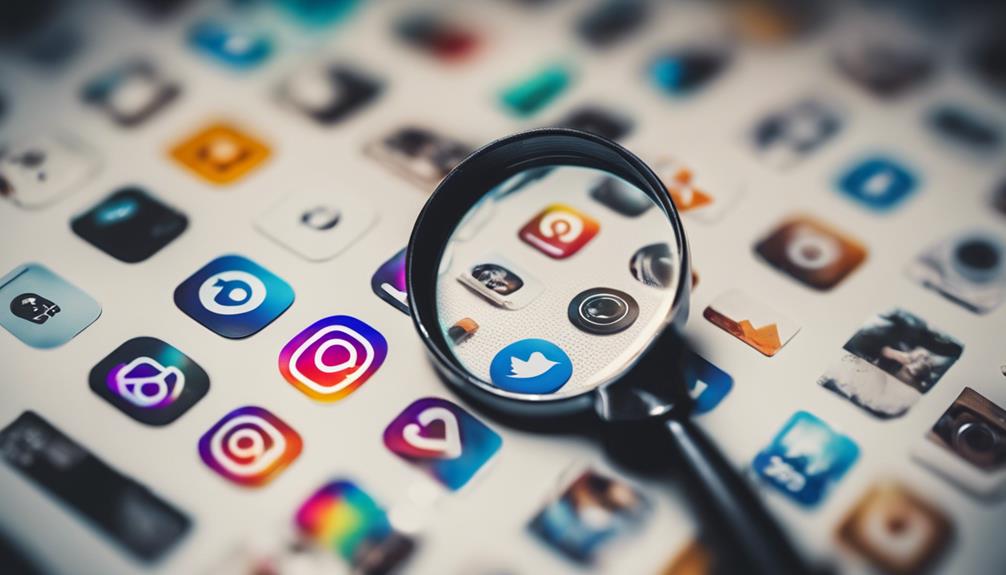
How do you find people who don’t follow you back on Instagram?
Browsing through your bustling Instagram account, have you ever been baffled by the balance between those you follow and those who follow you back? It’s a common conundrum you might want to clarify. Instagram’s interface doesn’t directly reveal those elusive individuals who don’t reciprocate your following.
Yet, there are techniques and tools that can help uncover them. Why should you bother, you may ask? Well, understanding this can greatly shape your social media strategy and engagement.
Curious to find out how? Stick around as we dissect this digital dilemma.
Key Takeaways
- You can manually check your followers list or use Instagram’s ‘Least Interacted With’ feature to identify non-followers.
- Apps like ‘Unfollow for Instagram’ and ‘Followers & Unfollowers’ provide detailed follower statistics and non-follower identification.
- Be mindful of security risks and potential data theft when using third-party apps for non-follower detection.
- Unfollowing non-reciprocators needs careful consideration due to potential impacts on follower count, stability, and online image.
Understanding Instagram’s Follow System

To fully grasp how to identify those not following you back on Instagram, it’s important to first understand Instagram’s unique follow system. It’s not as simple as clicking a button; there’s an intricate algorithm at play behind the scenes. This algorithm makes use of numerous user engagement metrics to determine which posts appear in your feed.
Instagram’s algorithm intricacies can seem challenging. However, fear not. You don’t need a computer science degree to understand them. The algorithm aims to predict what content you’ll enjoy the most, based on your past behavior. It considers factors such as the timeliness of posts, your relationship with the user posting, and the likelihood you’ll be interested in the content.
A key element of this system is the ‘follow’ function. When you follow someone on Instagram, you’re basically telling the algorithm you’re interested in their content. This doesn’t guarantee you’ll see all their posts, but it does increase the chances. However, just because you’re following someone doesn’t mean they’ve to follow you back. That’s where things get tricky, and learning how to identify those who don’t reciprocate your follow becomes essential.
The Importance of Follower-Following Ratio
Often overlooked, your follower-following ratio on Instagram plays a critical role in shaping your social media presence and credibility. It’s not just about having a high number of followers, but also about how many people you’re following. This ratio can greatly impact your social media image.
A favorable follower-following ratio implies that more people are interested in your content than you’re in theirs. It shows that your content is engaging, which boosts your profile’s attractiveness. This forms a positive feedback loop, attracting even more followers.
Follower Engagement Analysis also plays a pivotal role in enhancing your Instagram presence. By analyzing your followers’ engagement, you can tailor your posts to increase interaction, thereby improving your ratio. Remember, an engaged follower is more likely to share your content, further expanding your reach.
Maintaining a healthy follower-following ratio and high engagement levels requires consistent effort, strategic planning, and understanding your audience’s preferences. So, pay close attention to this ratio. It’s more than a number; it’s a reflection of your Instagram strategy’s effectiveness and a key measure of your social media image. It’s time to take your Instagram game to the next level.
Manual Method: Checking Followers List

While a healthy follower-following ratio is important, it’s equally important to know who’s not reciprocating your follow, and you can do this manually by checking your followers list. This method, although time-consuming, gives you a clear, hands-on perspective of your social engagement dynamics.
To start, here’s a simple three-step process:
- Navigate to your profile: Tap on your profile icon and then on ‘Followers’. This provides you with a list of all the people following you.
- Select a user: Click on the profile of the person you suspect mightn’t be following you back. This is where profile stalking tactics come into play.
- Check their following list: On their profile, tap ‘Following’. If you can’t find your username in their following list, it’s clear they’re not following you back.
You can then decide whether to unfollow them or engage with them more actively using direct messaging strategies. Remember, it’s not just about the numbers, it’s about cultivating meaningful relationships and interactions.
This manual method, although requiring more time and effort, provides an opportunity for you to clean up your Instagram account and enhance your social media presence.
Using Instagram’s ‘Least Interacted With’ Feature
You might be surprised to learn that Instagram’s ‘Least Interacted With’ feature can be a valuable tool in finding who’s not following you back.
Let’s guide you through the process of accessing to this feature and understanding its nuances.
Evaluating interaction levels can give you insights into your follower dynamics, and we’re about to show you how.
Understanding ‘Least Interacted With
Diving into Instagram’s ‘Least Interacted With’ feature can offer a clear snapshot of those followers with whom your engagement is at a minimum. This tool is crucial for interaction analysis, helping you identify the followers you’re not connecting with sufficiently. It’s a smart way to strategically boost your user engagement.
Here’s how it benefits you:
- Identifying Dormant Relationships: It pinpoints those followers who’ve slipped off your radar, making it easier to re-engage them.
- Improving Content Strategy: By understanding who isn’t interacting, you can tailor your content to reignite their interest.
- Enhancing Audience Understanding: It offers a deeper insight into your audience’s preferences, helping you craft a more appealing Instagram presence.
Understanding this feature is a step towards refining your Instagram strategy.
Accessing Instagram’s ‘Least Interacted With’ feature isn’t an intricate task, and it’s an essential step in identifying followers you’ve lost touch with. Instagram algorithms have designed this feature to provide users with profile accessibility to those they’re least connected with.
To navigate to this feature, follow the steps detailed in the table below:
| Step | Action | Description |
|---|---|---|
| 1 | Open Instagram | Launch the Instagram app on your device |
| 2 | Go to profile | Tap on your profile icon at the bottom right |
| 3 | Open settings | Tap on the menu lines at the top right, then select ‘Settings’ |
These steps will guide you to the ‘Least Interacted With’ feature, helping you to streamline your follower list. Next, we’ll discuss ‘Evaluating Interaction Levels’.
Evaluating Interaction Levels
Accessing the ‘Least Interacted With’ feature preps the ground for the next phase of the journey: evaluating interaction levels with your followers. This approach gives you a thorough understanding of who’s engaged with your content and who isn’t.
- Start by analyzing post engagement. Look at likes, comments, shares, and saves. See a pattern? That’s your audience’s interest speaking.
- Next, use this data to refine your content strategy. What posts get high engagement? Develop more of those.
- Finally, monitor changes. As you implement your revised strategy, note any shifts in follower interaction.
This process isn’t just about finding non-followers. It’s about developing a dynamic content strategy that keeps your audience engaged and your Instagram thriving.
Third-party Apps to Identify Non-followers
You might find third-party apps useful in identifying Instagram users who aren’t following you back.
We’ll walk you through some popular unfollower apps and help you understand their functions.
However, it’s important to take into account the security concerns before using these apps.
Exploring Popular Unfollower Apps
To identify those who aren’t reciprocating your follow on Instagram, numerous third-party apps have surfaced, offering detailed insights and analytics. You may be wondering which ones are reliable and easy to use.
Here are three popular ones, assessed through an app credibility analysis and user interface comparison:
- Unfollow for Instagram – Non-followers & Fans: This app is lauded for its simple, intuitive interface and accurate data.
- Followers & Unfollowers: With an excellent reputation, it provides detailed follower statistics and manages your Instagram effectively.
- Unfollowers & Ghost Followers: This app stands out with its innovative features like ‘Ghost Followers’ identification.
Evaluating App Functions
Let’s now get a closer look at the functions of these third-party apps that can help you pinpoint who on Instagram isn’t following you back.
The first thing you’ll want to evaluate is app compatibility issues. Make sure that the app you choose is compatible with your device’s operating system for seamless use.
A well-designed user interface is also important for easy navigation. Look for apps with clear, intuitive, and user-friendly interfaces that make the process of identifying non-followers straightforward.
Some apps also provide additional features such as insights into your followers’ behavior, which can be handy.
Security Concerns of Apps
While considering third-party apps to identify Instagram non-followers, have you pondered the potential security risks? You must be cognizant of the app vulnerability risks and data theft potential these tools may pose.
- App Vulnerability Risks: These apps often require access to your Instagram account. In doing so, they may expose you to malware or other security threats.
- Data Theft Potential: By granting these apps access, you’re potentially allowing them to collect and misuse your personal data.
- Inadequate Privacy Protections: The privacy policies of third-party apps may not be stringent, further increasing your vulnerability.
Dealing With Non-Followers: to Unfollow or Not
Managing the decision of whether to unfollow those who don’t reciprocate your follow on Instagram can be a tricky task, but it’s an essential part of managing your social media presence efficiently. Unfollower etiquette matters; it’s not just about clicking that ‘unfollow’ button. You have to contemplate the possible implications, like the potential for strained relationships and damaged online reputation.
Ignoring non-followers might seem like a convenient option, but it doesn’t always work in your favor. Your follower-to-following ratio plays a vital role in your Instagram presence. A balanced ratio often indicates authenticity and engagement, which can attract more followers. On the other hand, a skewed ratio might create an impression of a spam account, which you certainly don’t want.
To unfollow or not is a personal decision, depending on your social media goals. If you’re on Instagram for personal fun, you mightn’t mind non-reciprocated follows. But if you’re using Instagram for business or branding purposes, you might want to maintain an ideal follower ratio. Remember, it’s about what works best for you and aligns with your social media strategy.
The Impact of Unfollowing on Your Account

In light of your Instagram strategy, it’s essential to understand the potential impact that unfollowing non-reciprocators can have on your account’s credibility and standing. Unfollow consequences aren’t to be taken lightly. The act of unfollowing can have a ripple effect. Here’s why:
- Reciprocal unfollowing: When you unfollow someone, they’re likely to unfollow you back, reducing your follower count. Remember, Instagram is a community, and relationships matter.
- Perception of instability: Frequent following and unfollowing can make you appear unstable or uncommitted to your audience, damaging your brand’s reputation.
- Algorithm impact: Instagram’s algorithm favors engagement. If you’re constantly unfollowing, you’re likely to have less interaction, which can lower your visibility on the platform.
Balance is key. While it’s essential to manage your follower/following ratio for credibility, avoid unfollowing rashly. Consider the value each follower brings to your brand, community, and engagement. As you navigate the Instagram landscape, always be mindful of the potential consequences of your actions. Your online presence and reputation could be at stake.
Maintaining a Healthy Instagram Presence
To maintain a robust and healthy presence on Instagram, it’s essential that you strike the right balance between following others and fostering meaningful engagement. It isn’t just about numbers, but the quality of interactions and relationships you build.
Implement effective Instagram engagement strategies to boost your reach and visibility. Regularly engage with your audience by responding to comments and messages, and initiate conversations. Participate in relevant discussions to establish your presence within your niche.
Content optimization techniques are also vital in maintaining a vibrant Instagram presence. Make sure your posts aren’t only visually appealing but also packed with valuable content. Use relevant hashtags, geotags, and captions to improve your content’s discoverability.
Experiment with different content formats like Stories, Reels, IGTV, and live videos to keep your profile fresh and exciting. Monitor your analytics to understand what resonates with your audience and adjust your strategies accordingly.

